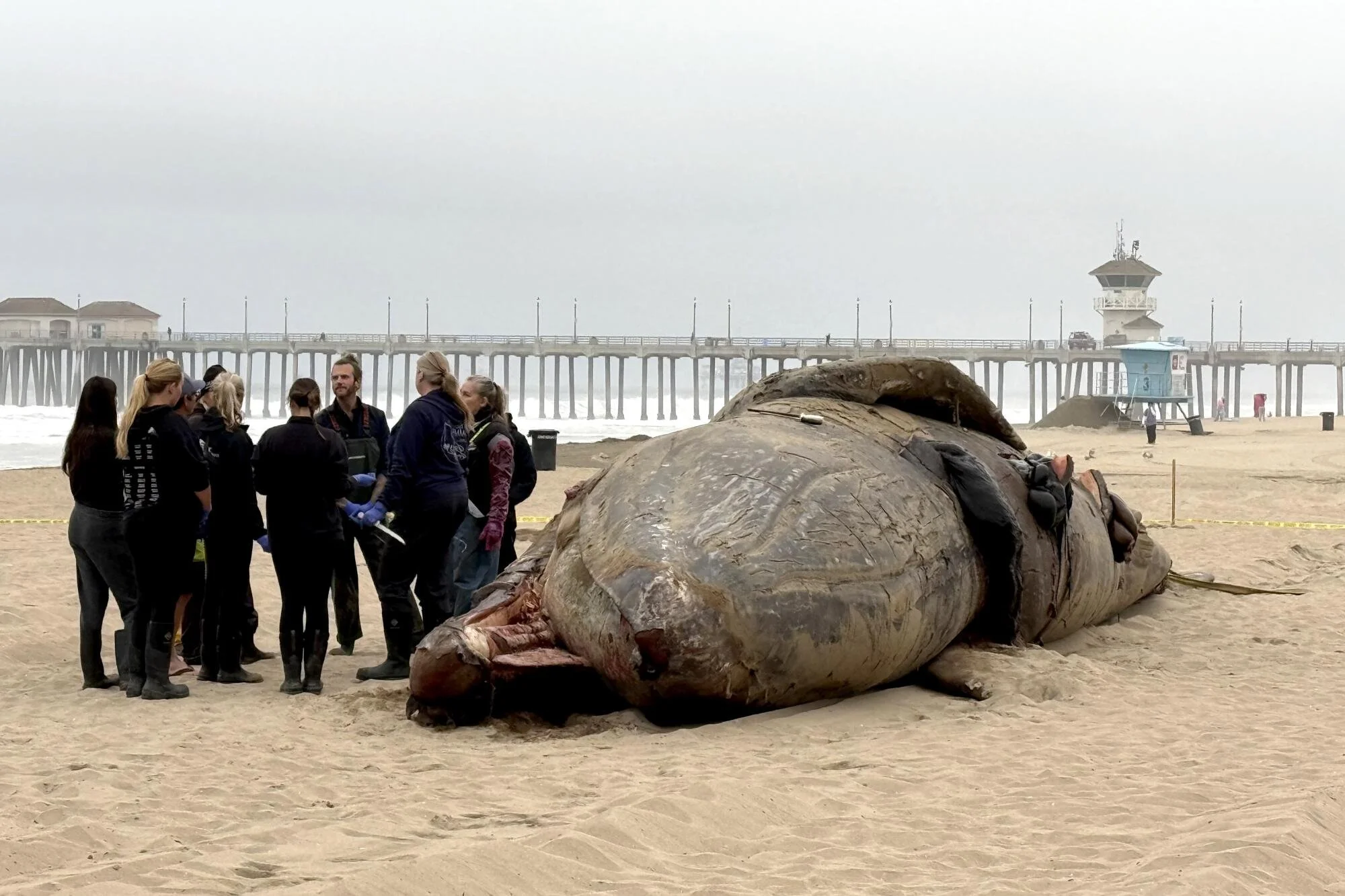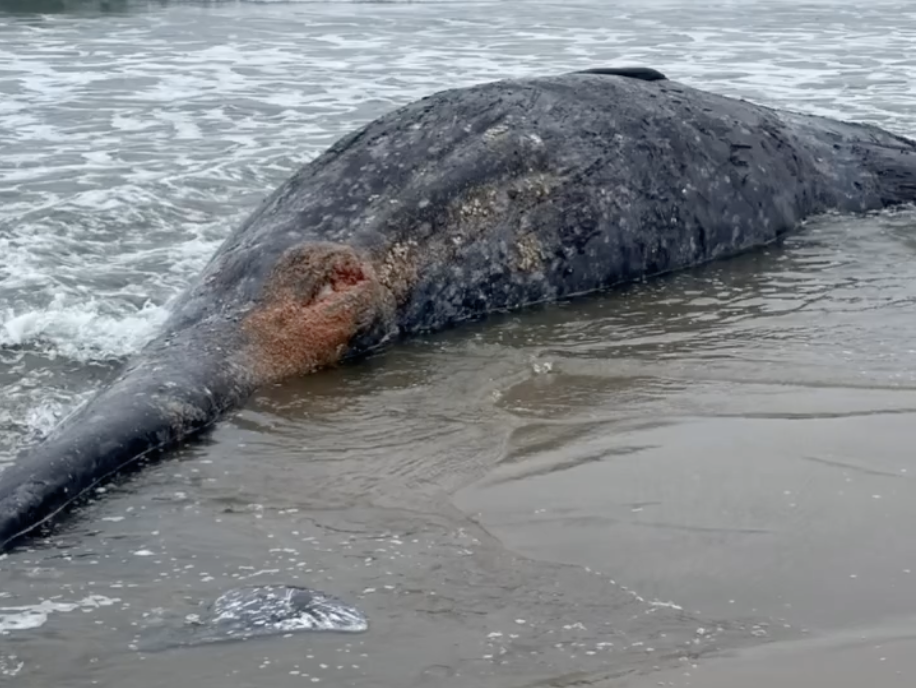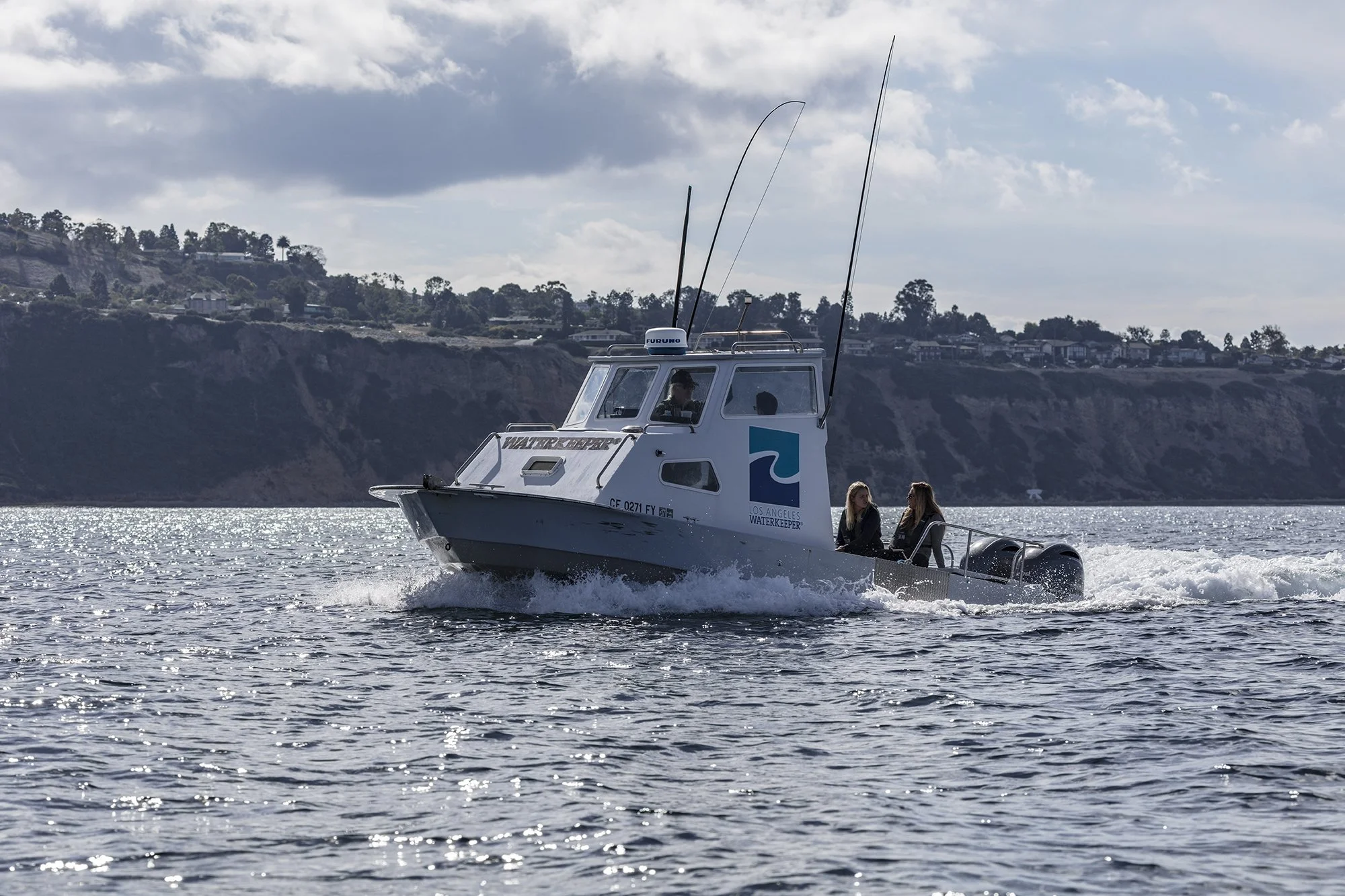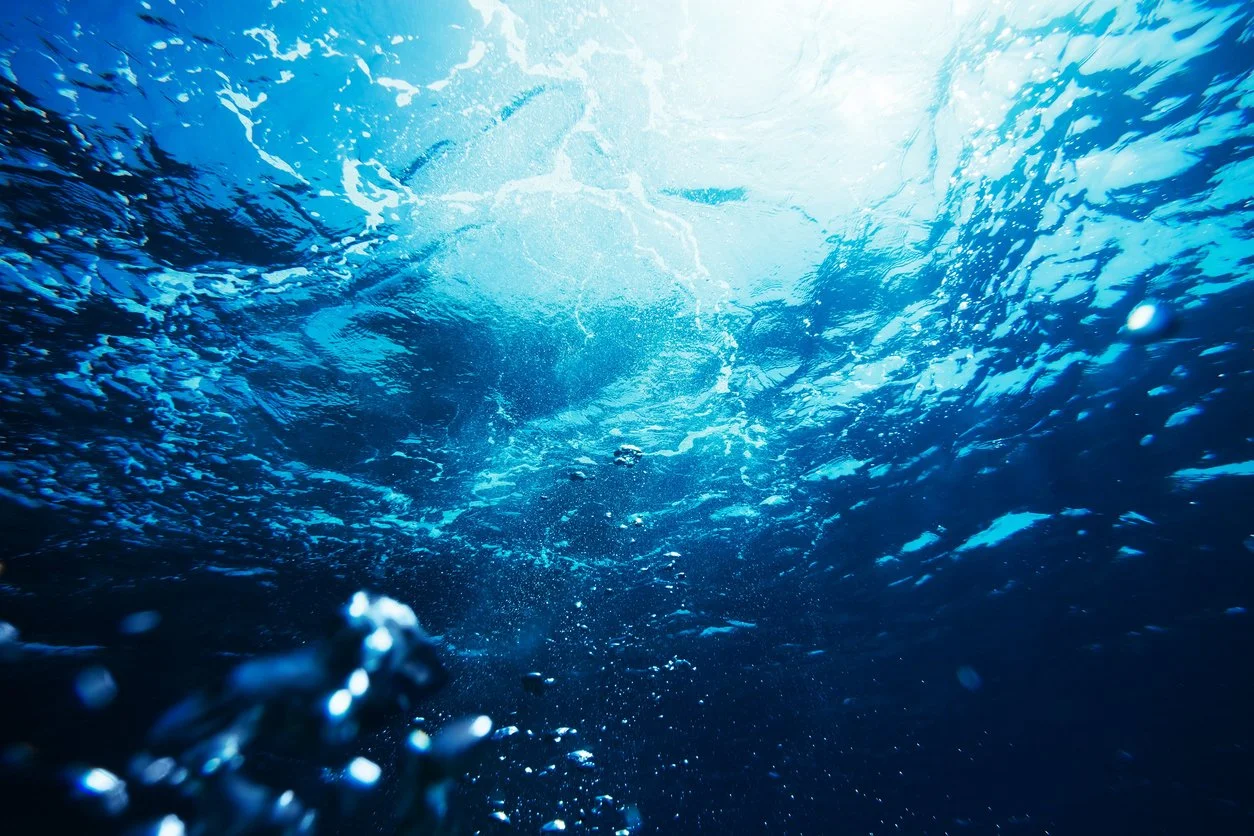The Ocean Is Telling Us Something: It’s Time to Listen
From sick marine life to increasingly frequent harmful algal blooms, at LA Waterkeeper, we understand these are not isolated events — they’re a wake-up call. A signal that the way we’ve managed water in Los Angeles for the past century is not working, and that change is not only necessary, it’s long overdue.
June 30, 2025
A beached whale at Huntington Beach, April 2025. Photo Credit: Pacific Marine Mammal Center (via The Los Angeles Times)
Since Los Angeles Waterkeeper was founded in 1993, we’ve undergone several evolutions in our fight to protect LA’s waterways. While we originally focused primarily on marine and coastal health, over time, we expanded our efforts to confront pollution at its source: a broken system that treats our rivers, streets, and storm drains like open drainage pipes to the sea.
Even as our mission has grown to protect all of LA’s waters and push for long-overdue system change, marine health has always remained central to our cause. That’s because the ocean is one of the clearest indicators of how well — or how poorly — we’re managing our water systems. And right now, the warning signs couldn’t be clearer.
From sick marine life to increasingly frequent harmful algal blooms, at LA Waterkeeper, we understand these are not isolated events — they’re a wake-up call. A signal that the way we’ve managed water in Los Angeles for the past century is not working, and that change is not only necessary, it’s long overdue.
What’s Threatening Our Oceans
Los Angeles has long treated our coastal waters with an “out of sight, out of mind” attitude — as an inevitable, if unfortunate, final destination for everything we fail to manage upstream.
On a dry day, up to 100 million gallons of contaminated runoff flows into LA’s rivers, creeks, and coastal waters. This runoff carries with it a dangerous cocktail of pollutants, from motor oil to fertilizers, industrial waste, heavy metals, bacteria, and trash. And, thanks to crumbling infrastructure and a patchwork of outdated policies, much of it reaches the ocean untreated.
We can see the very real impacts of this broken system with our own eyes:
A beached whale at Dockweiler State Beach, February 2025. Photo Credit: Dr. Michael Quill.
Harmful algal blooms (HABs) becoming more frequent and more intense.
Domoic acid outbreaks causing mass strandings of marine mammals, from sea lions and dolphins to birds and whales. These toxins, which bioaccumulate in fish and shellfish, also pose a threat to human health.
Elevated bacteria levels are now a common feature of LA’s beaches, regularly causing beach advisories and threatening the health of swimmers, surfers, and families.
Ocean acidification and rising temperatures degrading critical marine habitats and wildlife.
These impacts have also recently coincided with the record-setting Los Angeles wildfires, which introduced additional nutrients, ash, and other contaminants — further exacerbating the already dire conditions.
The Los Angeles Waterkeeper Boat
What LA Waterkeeper is Doing About It
Los Angeles Waterkeeper’s Marine Program, led by Dr. Michael Quill, brings together on-the-water monitoring, advocacy, and community engagement to protect LA’s coastal waters.
Photo Credit: Michael Quill, Playa del Rey, July 21, 2024
MPA Watch and On-the-Water Monitoring
As part of our role in California’s MPA Watch Network, LA Waterkeeper collects critical data on human activity in and around Marine Protected Areas (MPAs) — zones designed to preserve biodiversity and support marine recovery. We work closely with the California Department of Fish and Wildlife to support enforcement, track ecological trends, and share findings that can inform regional ocean management. We also help educate local communities about MPA protections, expanding public awareness and stewardship.
LA Waterkeeper’s marine team is on the water 60 to 80 times a year, covering LA County’s entire coastline — one of the most consistent monitoring efforts in Southern California. We collect water samples, investigate pollution sources, and document signs of environmental stress, from algal blooms to illegal discharges and ballast water violations.
Water Quality Testing and “Following the Feces”
Our viral and bacterial pathogen testing program is a core strategy in bridging the gap between pollution and public health. Under the banner of “Following the Feces,” LA Waterkeeper collects water samples in key locations — including the Dominguez Channel, LA Harbor, Ballona Creek, and Playa del Rey — to detect human fecal contamination and viral markers using advanced digital testing technology.
Photo Credit: Dr. Michael Quill, December 2024
This work is especially critical as sewage spills and major storm events become more frequent, increasing the likelihood of dangerous contamination in our rivers, creeks, and coastal waters. Right now, that contamination often goes undetected or unreported in time to protect the public. The current system can take 48 to 72 hours to process and share water quality data — leaving a window where people may be swimming, surfing, or fishing in unsafe conditions.
By collecting timely, targeted data, LAW is helping show just how inadequate and delayed the existing system is — and why more responsive, transparent monitoring is urgently needed to protect public health.
Photo Credit: robertsrob
Why It Matters
The health of our ocean is a direct measure of our region’s wellbeing. When coastal waters are contaminated, the risks ripple far beyond the shoreline, threatening human health, wildlife, local economies, and the climate systems we all depend on.
Public health is often the first and most visible casualty. Bacterial contamination in ocean water can cause serious illnesses — from gastrointestinal infections to respiratory issues and skin rashes. These risks are especially dangerous for children, older adults, and people with compromised immune systems.
Contaminated water also impacts marine life. Long-term exposure to pollutants can cause illness, disrupt reproduction, and lead to mass die-offs of fish, marine mammals, and seabirds. In the most severe cases, pollution contributes to harmful algal blooms, ocean acidification, and hypoxia — conditions that devastate marine ecosystems and threaten entire food chains.
The economic stakes are just as high. LA’s beaches are a major driver of tourism, recreation, and local business. Coastal closures, wildlife die-offs, and degraded water quality don’t just undermine public trust — they impact jobs, tax revenue, and economic stability across the region. California’s ocean economy is valued at over $44 billion annually, with much of that tied directly to the very coastal access and clean water now under threat.
Underlying all of this is the climate crisis. Warmer oceans mean more frequent bacterial growth, more persistent algal blooms, and more intense storms that overwhelm our water systems and carry even greater loads of pollution to the coast.
Help Protect What Protects Us
Our coastal waters are reaching a breaking point, with increasingly frequent harmful algal blooms, more intense storms, repeated beach closures, and mounting risks to public and ecological health. But this moment is also an opportunity to rethink our assumptions, modernize our systems, and build toward a more sustainable future.
The ocean plays a critical role in sustaining all life on Earth. It regulates our climate, produces most of the oxygen we breathe, and supports economies, ecosystems, and communities.
Help protect what protects us.
Donate to support science-driven advocacy and monitoring.
Share this story to keep others informed.
Volunteer to help restore our coast.
Subscribe to stay connected and take action. (Please find the subscription form at the bottom of our Home page and our News & Stories page)
Every step matters. Together, we can shape a more resilient, just, and livable water future for Los Angeles.







